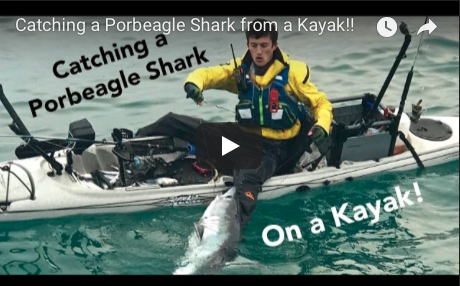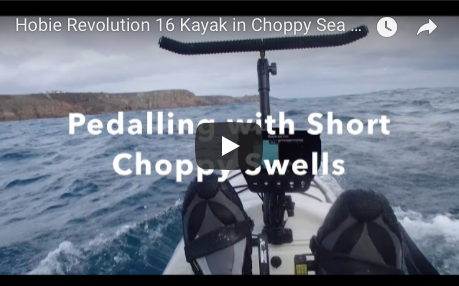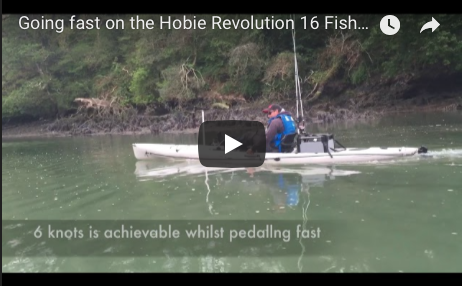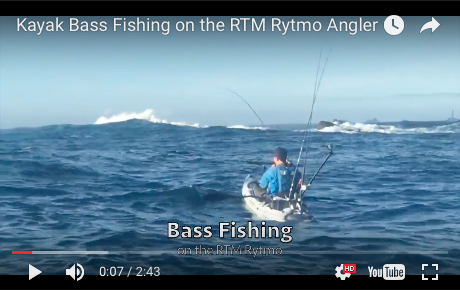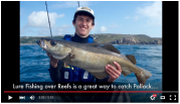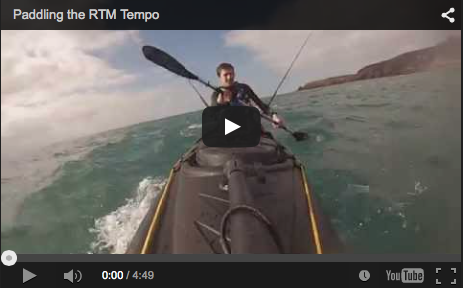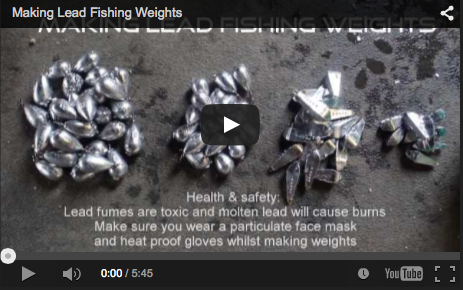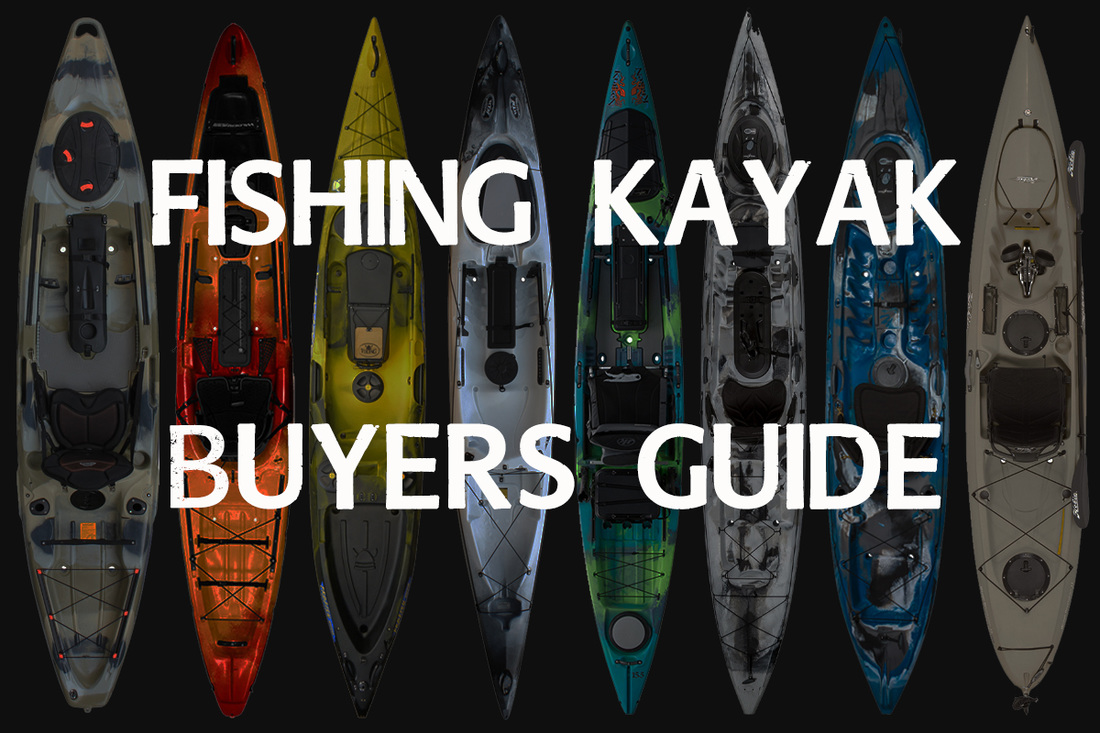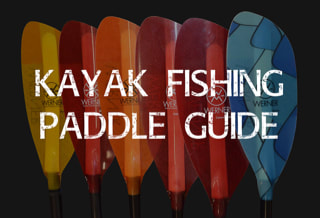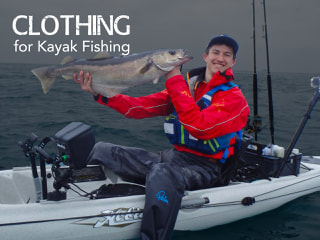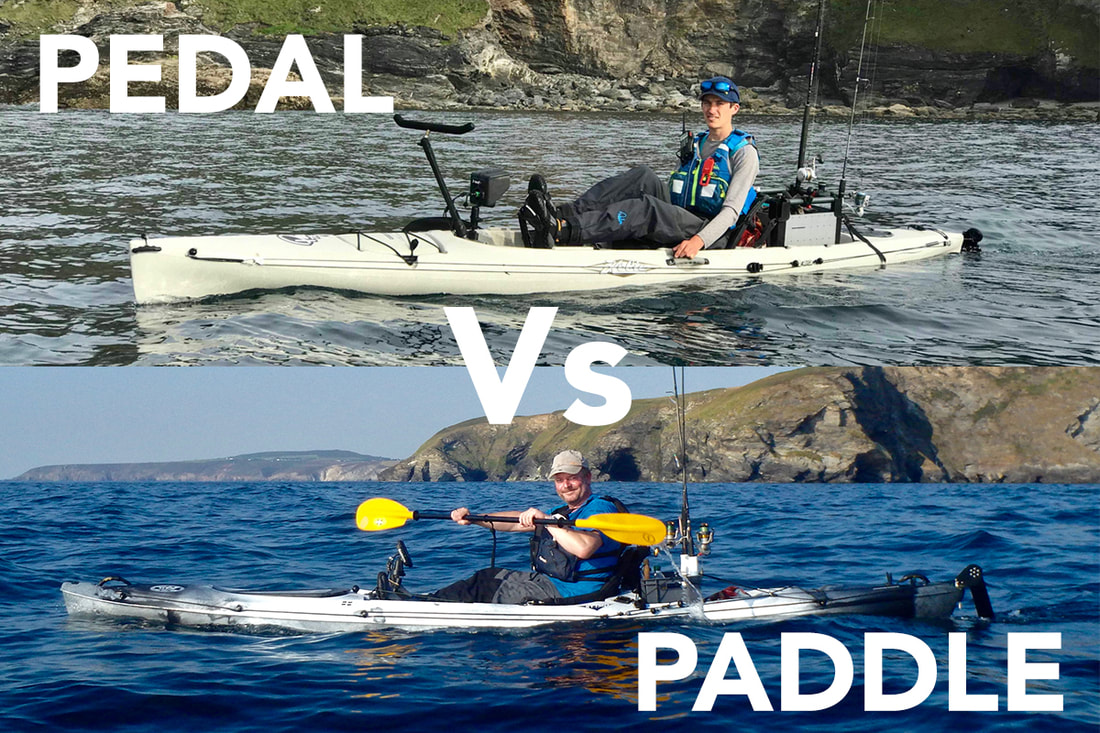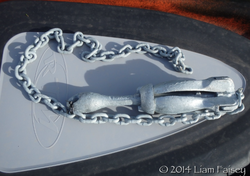 An anchor trolley is a fairly essential part of anchoring up whilst fishing. It allows you to position the point along the kayak at which your anchor line will enter the water. This allows you to position the kayak in a comfortable and, more importantly, safe position relative to the wind, swell and tide...... You really don't want to be anchored side onto a strong tide or big swell because you will inevitably be going for a cold swim - potentially a very dangerous situation. The anchor trolley allows you to move the anchor line to either the bow or stern of the kayak - the safest positions for an anchor line to enter the water, all from the safety of your seat i.e no climbing around the kayak! In calm conditions you can use the trolley to position yourself so that your not facing the sun and having to squint all day long! There are many different ways of setting up an anchor trolley but are all essentially built around a continuous loop of cord running through 2 pulleys - one at the front of your kayak and one at the back. Some people use a trolley running only half the length e.g from midpoint to stern or midpoint to bow, others have full length trolleys set up on both sides of the kayak to provide more options for positioning the kayak at anchor. I use a full length anchor trolley set up on the starboard side of the kayak. An anchor reel is also an essential piece of kit used to store the anchor line. There are many variations from expensive dive reels to a simple plank of wood. I have made my own suited to my needs.... more on that further down. So here's how i set up the anchor trolley and reel on my RTM Abaco. Step 1 - The Anchor Trolley Materials used:
First step was to mark out where the pad eyes will be fixed, one at the bow and one at the stern - mine are positioned approx. 6 inches back from each and above the waterline. After that its a case of drilling holes the same size as the the diameter of the rivet. I use anodised marine trifold rivets which are perfect for use on kayaks - the rivets have a silicon seal and neoprene gasket to give a waterproof seal. The soft aluminium shaft of the rivet collapses and splays in three sections giving maximum hold in soft plastics. I found that the holes in the pad eyes/lashing hooks were too small to take the rivet so they were drilled to increase their size. I used a dab of clear silicon on the rivets before pushing them into the hole to further reduce the chance of water entering the hull. The rivets are then carefully popped with a rivet gun. Once the pad eyes are in place you can clip on the small carbines and pulleys. Then set up the loop of cord that will run the length of the kayak, set up as shown in the images below, with the large carbine, beads and stainless ring incorporated into the loop. I have used a doubled up length of elastic (threaded through a stopper bead and knotted) that i have passed through the plastic D-ring on the very front of the Abaco then through the pad eye i have fitted. The carbine/pulley then clips onto this. This helps buffer some of the movement between the kayak and anchor line and keeps the loop of cord taut. The length of elastic could equally just be attached to the pad eye i fitted. At the stern the carbon/pulley is clipped directly onto the pad eye. The anchor line will eventually pass through the stainless steel ring. This allows me to unclip the ring and throw the anchor reel overboard should i need to un-anchor at speed for any reason. The anchor reel wont sink as it will be supported by a buoy - more on that in part 2. Once i was happy with the set up of the anchor trolley the next step was to position the zig zag cleat and rivet it in place. I position mine within easy reach of my seating position. I applied a good coating of silicon to the base of the cleat to create a waterproof seal. The cleat is used to stop the trolley sliding between the pulleys therefore keeping it held in your desired position - at bow or stern. It is also used to lock the anchor line in place. Thats the anchor trolley complete. It runs smoothly between the bow and stern and can be locked in the desired position using the zig zag cleat. The whole trolley can be unclipped at bow and stern meaning that you only need have it attached to the kayak when you plan to be fishing at anchor thus reducing weight on days when your not fishing static. Step 2 - The Anchor Reel and Anchor I decided to have a go at making my own anchor reel that would allow me to easily wind on anchor line when needed whilst being able to be placed somewhere where it would be out of the way. I decided on a reel mounted onto a plastic pipe that would fit into the scupper holes on the Abaco and in the flush mounted rod holders. I managed to get an empty plastic reel used to sell cord on from the local chandlers for free as it was destined for the bin! I made a small handle on its side using a bolt/nut, a couple of washers and a small piece of plastic tube. The reel was then mounted onto a 'wall storage hook' found at the local hardware store. This is bolted to the plastic pipe as shown in the photos. A small length of wood was shaped to fit snuggly within the pipe and then chamfered to fit the scupper hole. The spool is loaded with 100m of 3.5mm braided polypropylene cord with a small carbine tied onto the end. This then passes through the stainless steel ring on the anchor trolley. The carbine then can be clipped onto the anchor chain. I use a 1m length of 6mm chain which is then attached to the bottom of a 1.5kg folding grapnel anchor using a small shackle. The chain helps to increase the anchors holding ability and helps to buffer any movement between the anchor and the kayak. A 1.5kg anchor has held my kayak in all conditions i have anchored in and has even been used to anchor two kayaks in a reasonable tidal run with a fair ground swell rolling past. When the anchor reaches bottom and enough line has been let out to securely anchor the kayak the line is held in position using the zig zag cleat - there is now no pressure on the anchor reel. A buoy is clipped onto the anchor line so that it is free running. This allows the anchor reel to float should i need to unanchor at speed thus allowing me to come back and retrieve when possible. All i need to do is unclip the stainless steel ring from the large carbine on the anchor trolley and throw the whole anchor reel overboard! To stop the reel unwinding a couple of lashing loops are tied around the small peg on the metal wall hook. There are several ways in which to make your anchor 'trip' when snagged - a bridle, trip link or weak link. All work by allowing a snagged anchor to be pulled backwards out from a snag (hopefully!). I use a weak link system by attaching the anchor chain to the top of the anchor with a small cable tie. In theory, when at anchor there is little or no strain on the cable tie but if you become snagged you can paddle uptide against the anchor, shifting the pressure onto the cable tie, and with a sharp pull the cable tie will snap out (hopefully!) allowing the anchor to be pulled out of the snag backwards. It takes a bit of trial and error to find the size of cable tie you can break out - i use 1 or 2 small cable ties and find these easy enough to break when the anchor is snagged - you can always cut a small nick in the tie to make it easier to snap. So thats how i set up the anchoring system on my RTM Abaco. I've tried it out and it works brilliantly. It costs a bit to set up an anchor system, this set up cost me around £50-60, but the benefits it brings to your fishing outweigh the costs with static fishing allowing you to target species such as Rays, Conger, Bull Huss and Wrasse more effectively. 2016 UpdateOver the past few years i have been tinkering with my anchoring method. I no longer use a buoy and my quick release system now involves me slicing the anchor line with a knife (always on my PFD) if i need to un-anchor at speed. This way i will lose an anchor but that will not be a priority if i am needing to un-anchor quickly! No buoy means less gear to take too. I am also no longer using a large carabiner to pass the anchor line through - instead i have opted for a 60mm carabiner. This seems to keep the anchor line closer to the stern when at anchor. A full run through of my latest anchoring set up can be found on the following link: Rigging the RTM Rytmo Angler for Kayak Fishing.
19/8/2022 21:39:34
Really informative article, I had the opportunity to learn a lot, thank you. https://guvenbozum.com/ Comments are closed.
|
AuthorLiam Faisey My Tackle ShopSPONSORSProudly associated with
Cornwall's only specialist kayak fishing shop
Archives
March 2023
Categories
All
Add my blog to your feed reader by clicking the button below
Get blog updates via email
Kayak Fishing VideosCustom feed reader powered by FeedWind
Useful Links
Anglers Afloat
Cornish Shore & Kayak Fisherman Cornwall Canoes Palm Equipment Penzance Kayak Fishing Meet Info Saltwater Kayak Fisherman Magic Seaweed XC Weather |
|
Website powered by pasties and the hope of good weather!
© 2023 Liam Faisey
© 2023 Liam Faisey

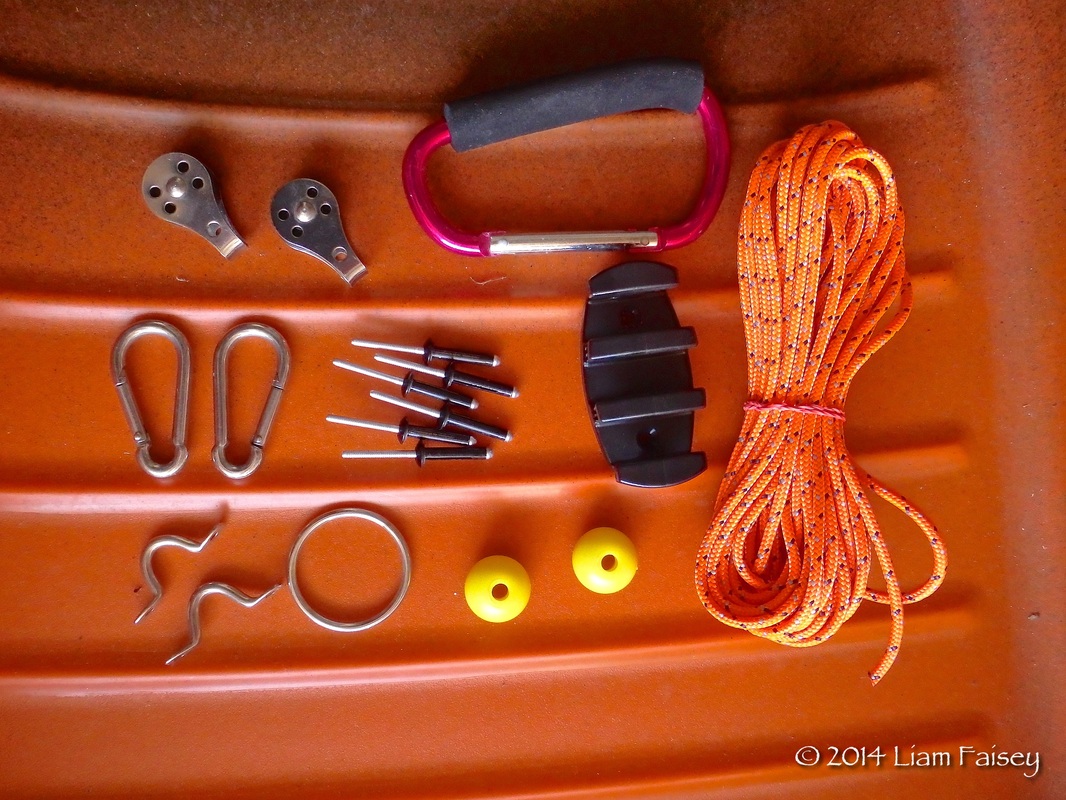
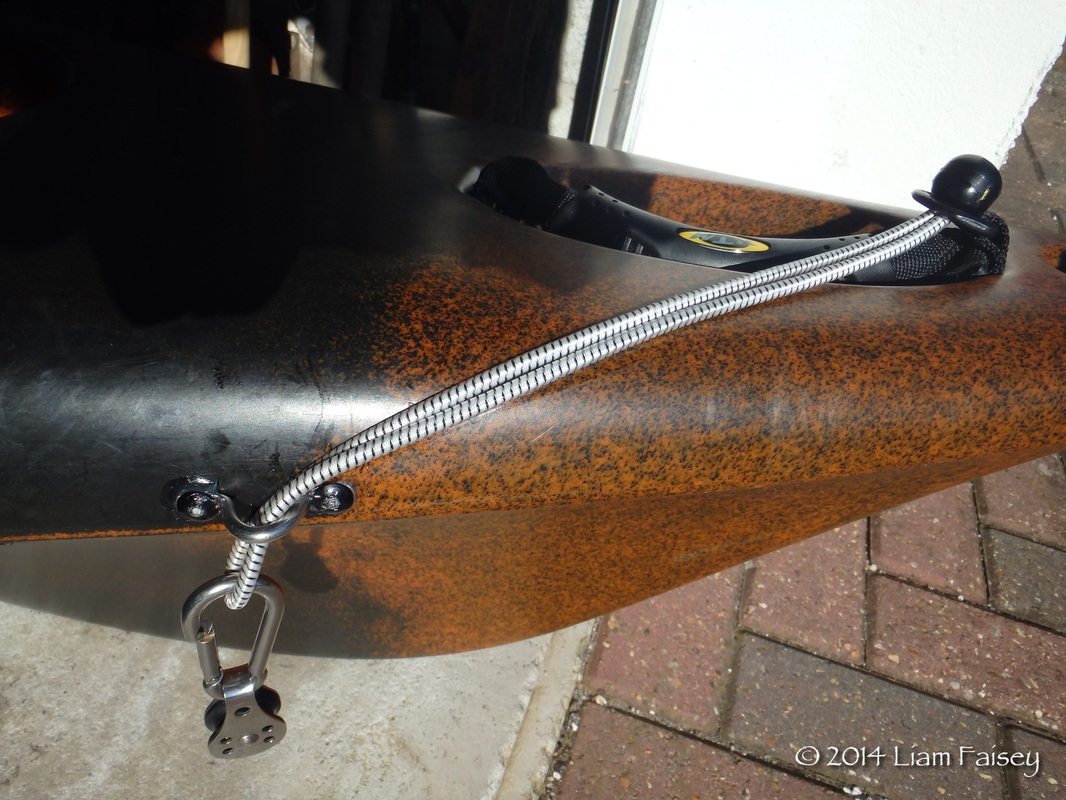
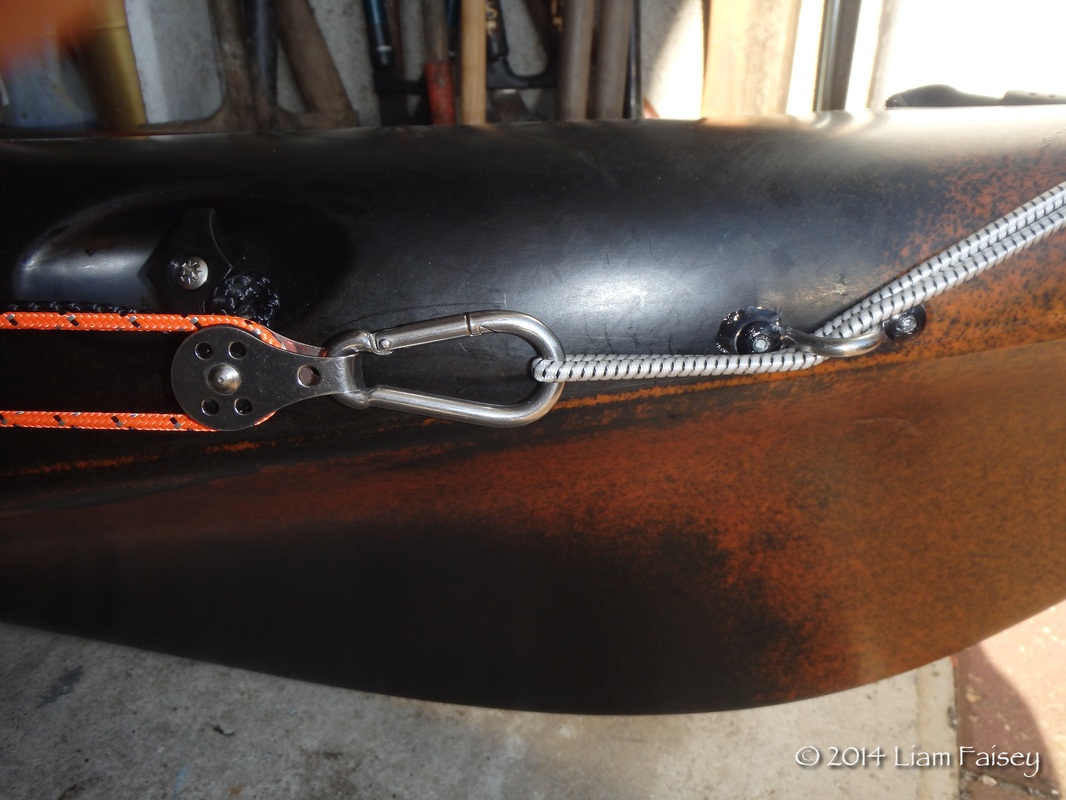
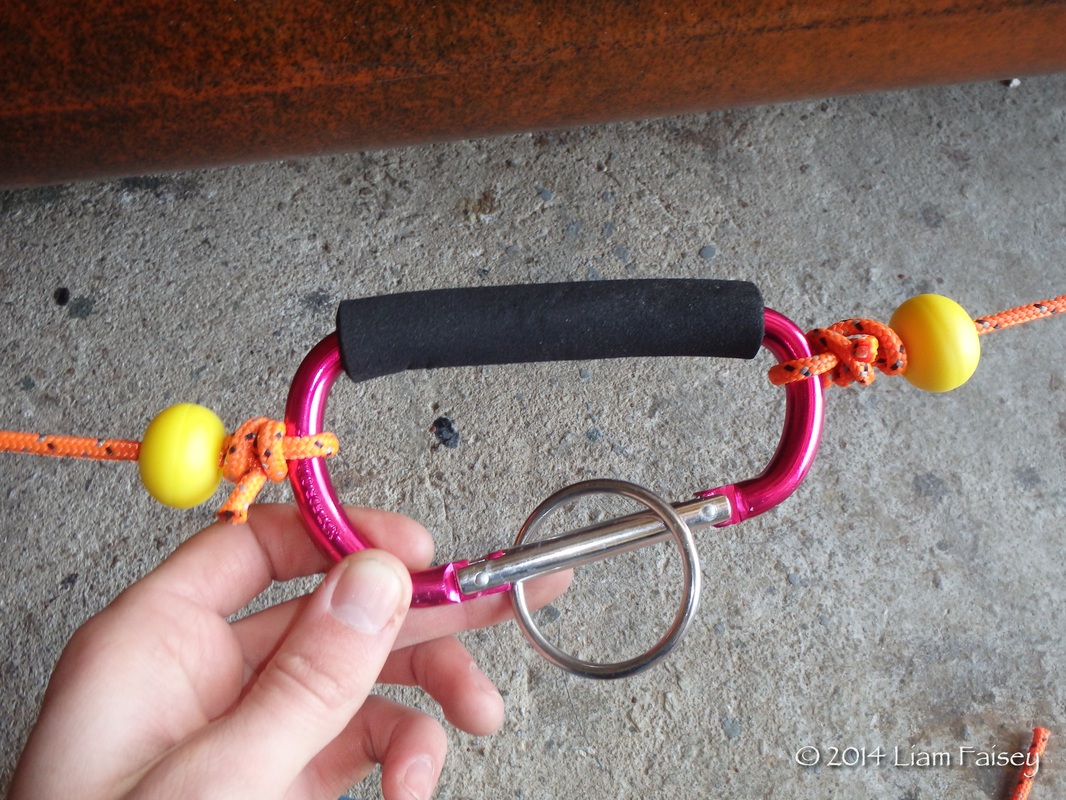
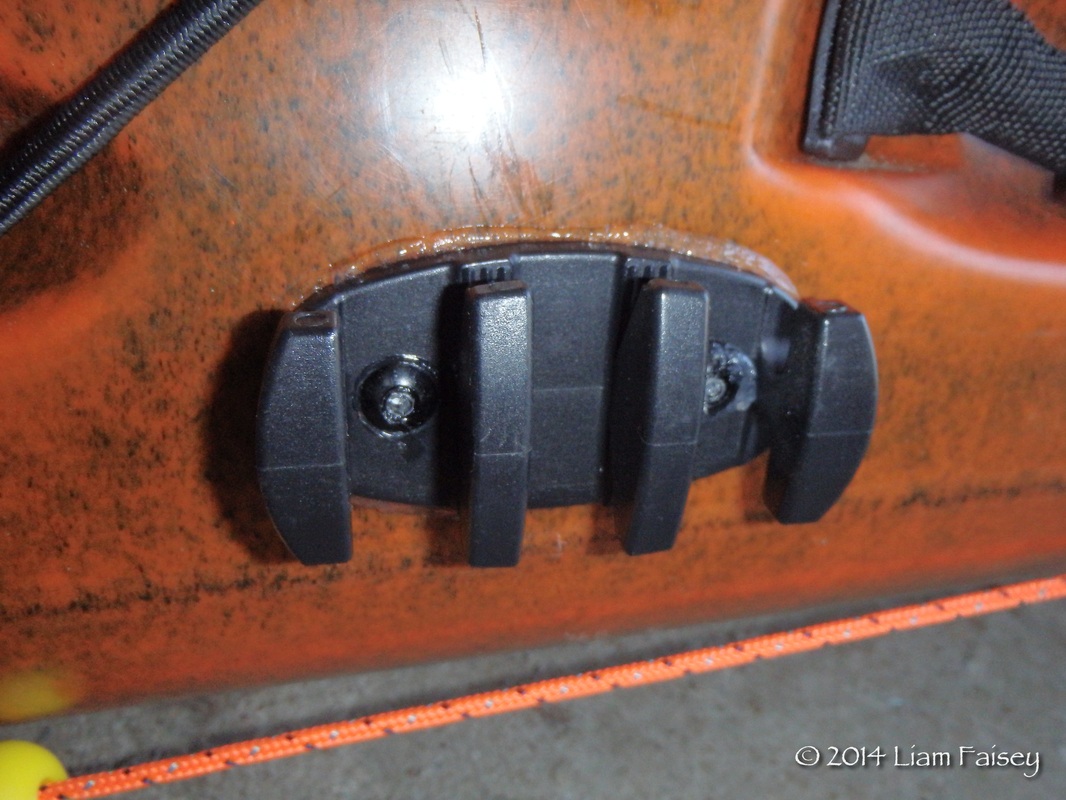
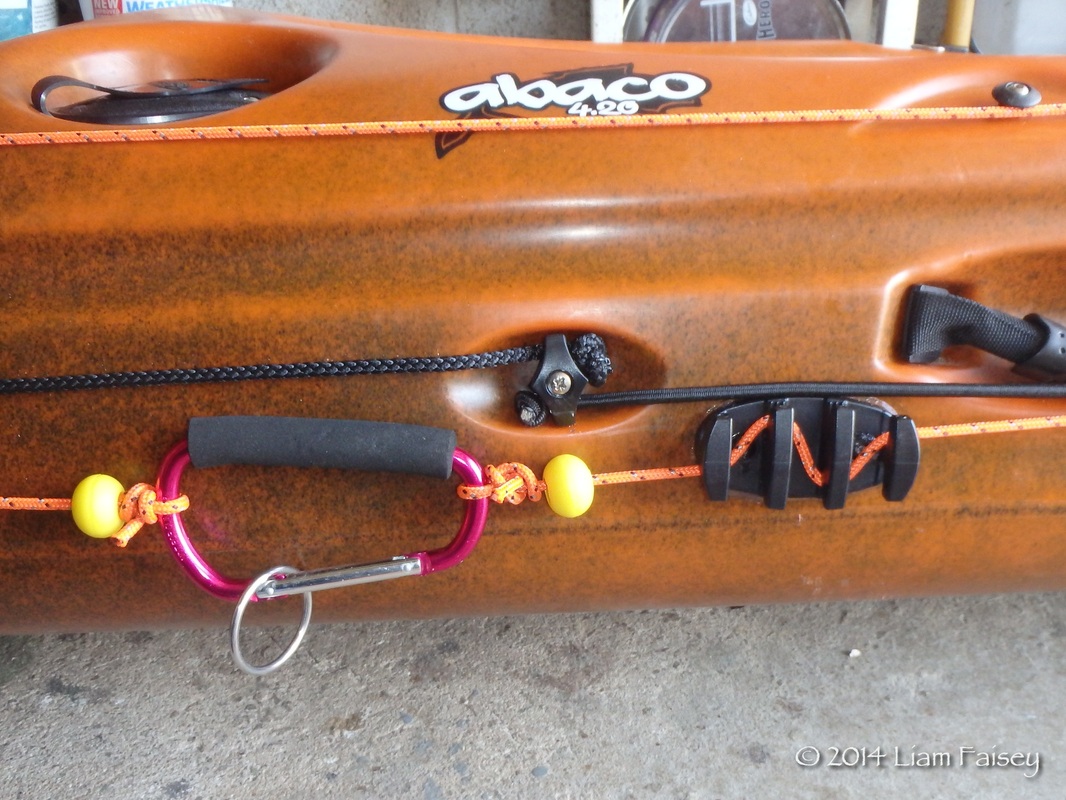
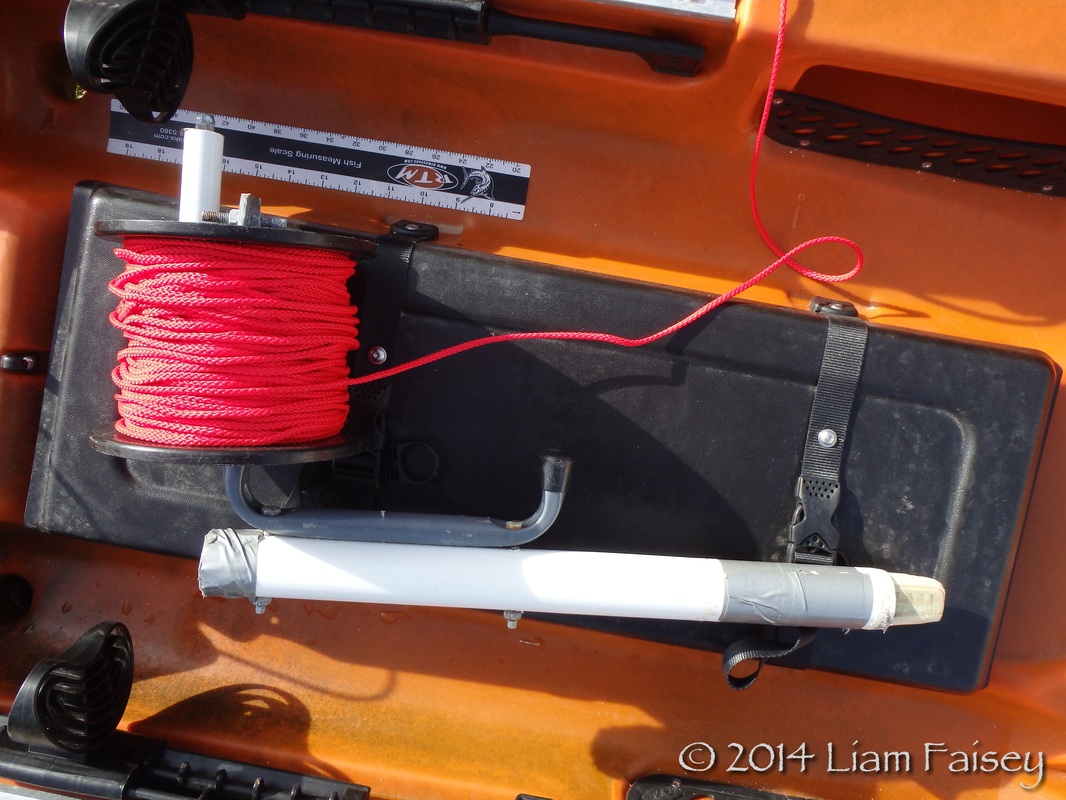
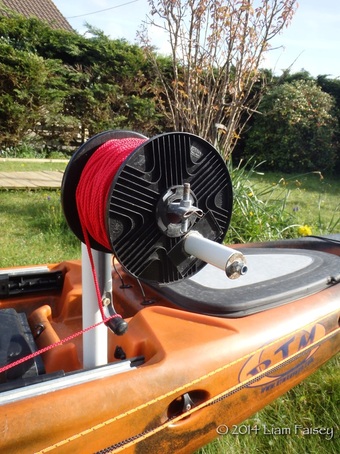
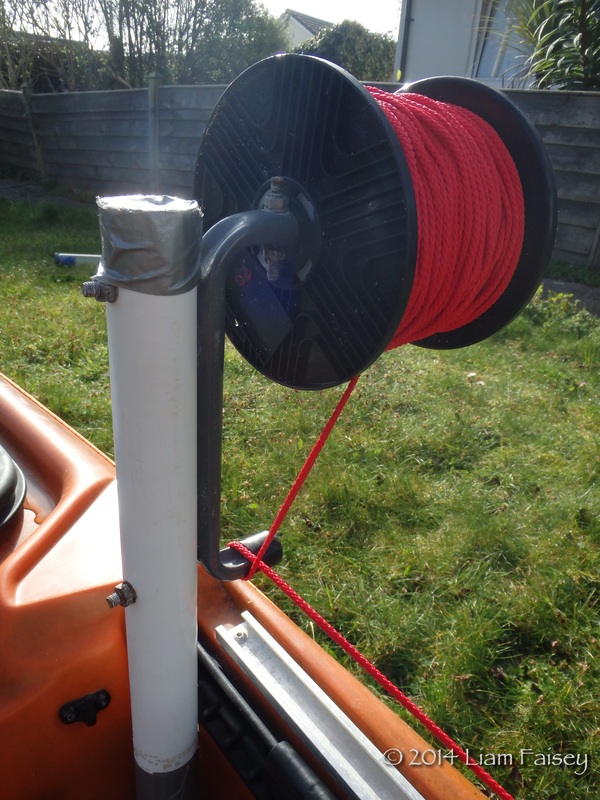

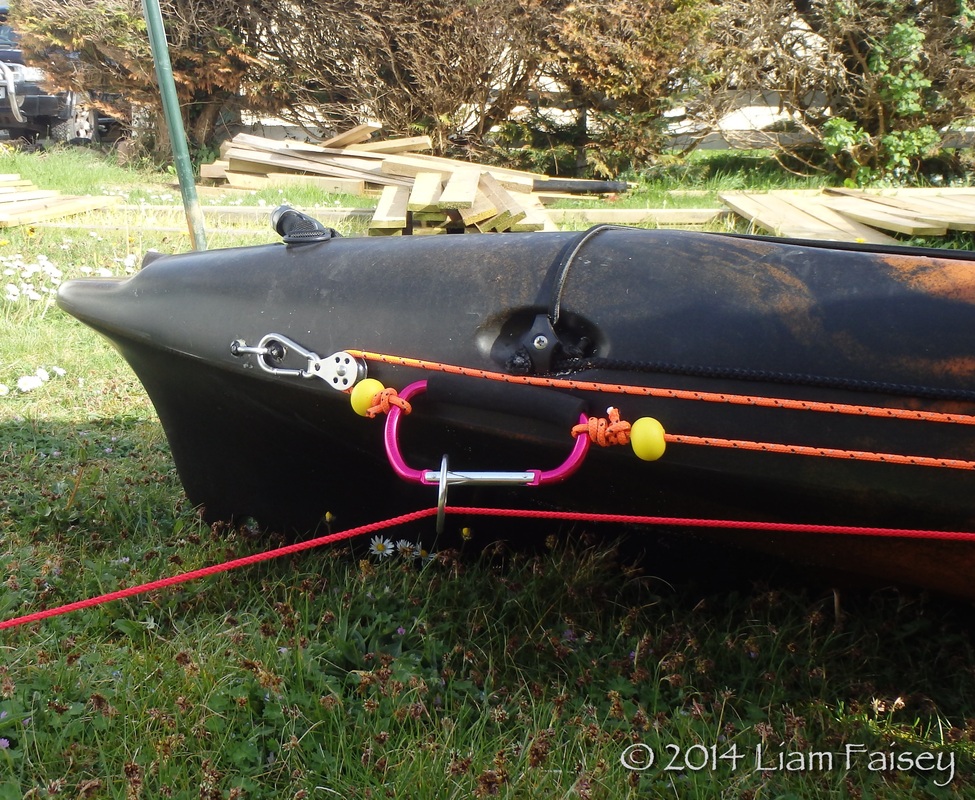
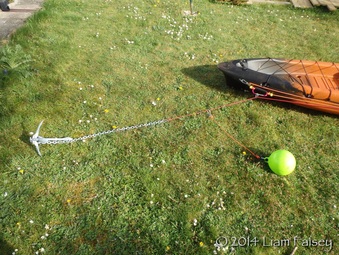


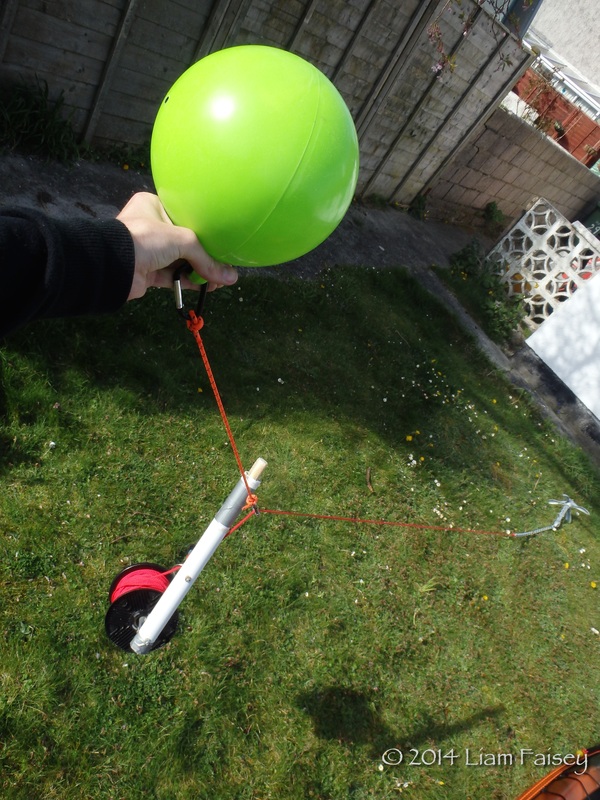
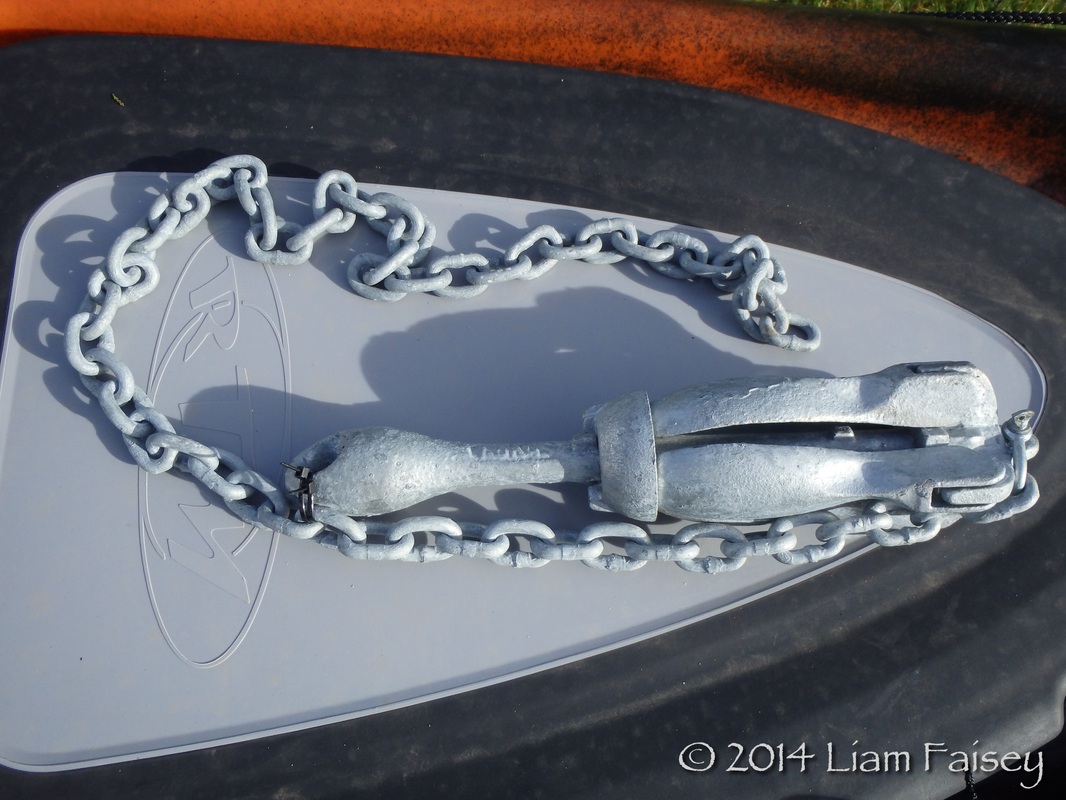
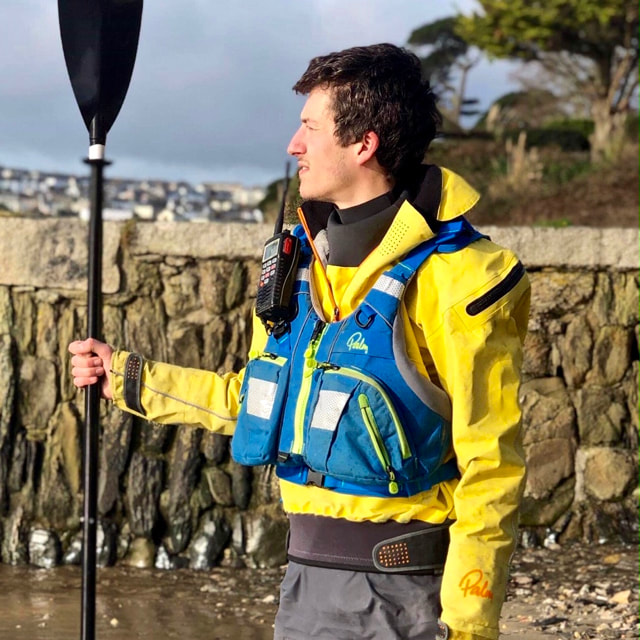
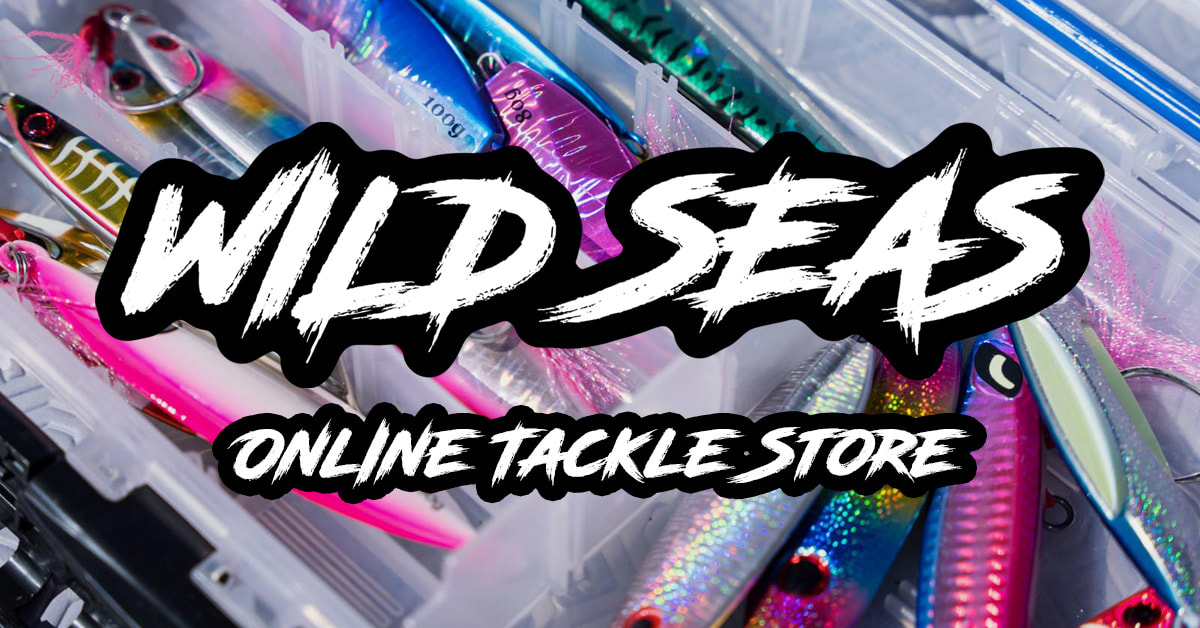



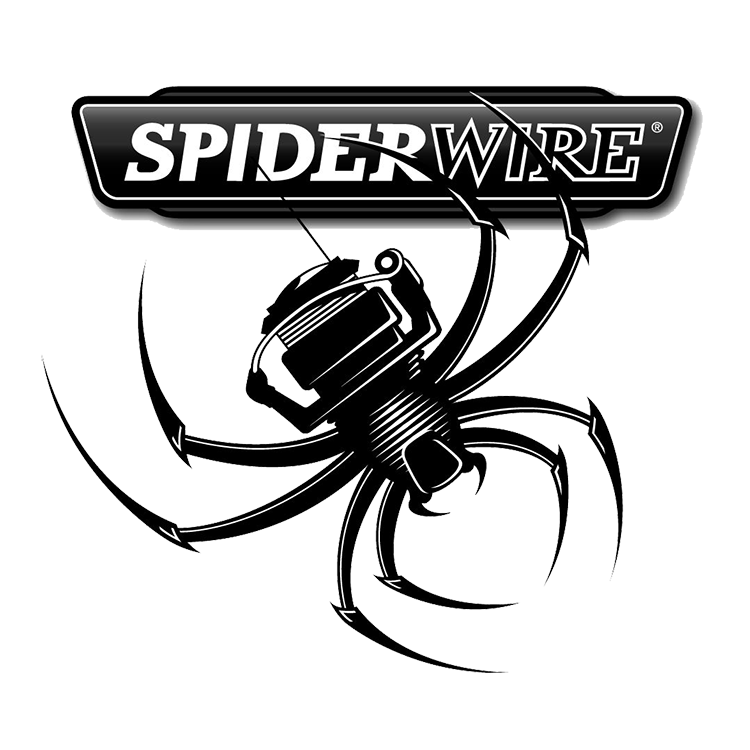
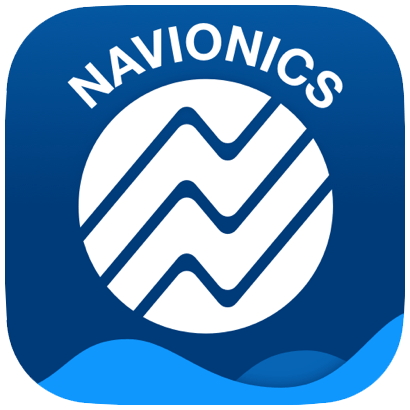

 RSS Feed
RSS Feed


